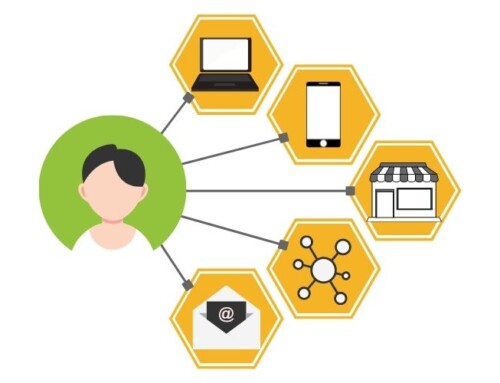What Is Subscription Management Software?
Subscription management software for small businesses as a monetization platform helps different departments, such as sales, marketing, and accounting, track and manage their subscription-based services. Although SaaS subscription management software is the most recognized type, digital and physical products are provided as a subscription business model.
Products in this category are offered as a software suite, combining multiple products such as subscription billing management software and subscription revenue management software, or as standalone solutions that deliver all features in one integrated system. The software typically integrates with eCommerce platforms, accounting software, and payment gateways, for payment processing and subscription billing management, such as PayPal or Stripe billing.
Additionally, it automates and streamlines the subscription process—from sign-up to renewal—including customer subscription management tools. It generates reports and analytics on subscription data, such as churn rate, customer lifetime value, and revenue trends, to help businesses make informed decisions about their subscription strategies.
The following criteria must be met for a product to qualify for inclusion in the subscription management category:
- Define and manage software, digital, and physical product subscription plans.
- Manage subscription pricing, discounts, and special offers.
- Users can create custom plans, bundles, and multi-year arrangements.
- Track subscription product sales and revenue.
- Manage changes to subscriptions, such as renewals, cancelations, etc.
- Identify upsell and cross-sell sales opportunities.
- Store customer information, including flexible billing, contracts, and recurring payments.
- Accommodate automatic subscription payments from several different payment methods.

Best Subscription Management Software Features
The key features of subscription management software work together to help businesses manage subscriptions more effectively by automating tasks, providing insights into subscription data, improving customer support, and offering customized subscription options.
-
Automated recurring billing:
The ability to automate monthly and annual billing and payments can reduce administrative costs, improve cash flow, and save hours of manual labor. Most importantly, it ensures that customers are charged automatically and on time, reducing the risk of missed payments and potential revenue leaks in your subscription workflows.
You should be able to automate billing logic in your recurring billing software to handle:
I) Prorations
What happens when a customer suddenly modifies their subscription during their billing cycle? Prorations adjust the bill amount to reflect any changes and only bill customers for the billable period at the end of the cycle.
II) Discounts and coupons
Automated recurring billing will help you easily add discount coupons to relevant subscriptions without breaking existing workflows. This discount will also reflect automatically on the invoice.
III) Calendar billing
Subscription services allow users flexibility, such as selecting a billing date that suits their financial cycles. In this scenario, calendar billing will enable customers to change their billing date and align all the new/upcoming subscriptions accordingly. Without automation, this sounds like a total nightmare, right?
IV) Grandfathering
As your business grows, changes in pricing models become inevitable. A grandfathering clause allows you to keep your older customers at the price they signed up for and apply new prices to new customers. With grandfathering, you can run pricing experiments with higher retention rates and maintain long-term customer satisfaction.
-
Customer management:
The ability to manage customer data, including contact information, billing history, and subscription status, will allow you to keep track of customer interactions and improve customer support. It also proactively identifies and addresses customer issues, reducing churn risk.
-
Subscription analytics:
The ability to generate forecasting reports and insights into subscription data, such as churn rate, customer lifetime value, and revenue trends, will help you to optimize pricing, improve retention, and inform business strategy. Cloud-based solutions should allow you to centralize these reports and analytics to make data-driven decisions and continuously improve your subscription-based products and services.
-
Compliance:
The ability to facilitate compliance with applicable regulations and accounting standards.
I) Revenue recognition
The software should support different methods to align with the appropriate accounting standards and comply with regulations such as GAAP or IFRS to maintain compliance with accounting principles.
II) Deferral management
The software should have capabilities to handle deferrals and manage unearned revenue. It should accurately track and report on deferred revenue, ensuring compliance with accounting rules and providing transparency in financial reporting.
III) Audit trail and reporting
The software should provide an audit trail of all subscription-related activities, including sign-ups, upgrades, downgrades, and cancelations. Robust reporting features generate accurate financial reports, including revenue recognition schedules, deferred revenue reports, and other compliance-related documentation.
IV) Tax compliance
The software should support tax calculations and management of tax rules based on different jurisdictions. It should apply the appropriate tax rates and comply with regulations, ensuring accurate tax calculations and reporting.
V) Data security and privacy
Compliance with data security and privacy regulations, such as GDPR (General Data Protection Regulation), is crucial and should have security measures to protect customer data and ensure compliance with relevant data protection laws.
VI) Integration with accounting systems
Integration with accounting software or ERP (Enterprise Resource Planning) systems is essential to streamline financial processes and ensure accurate and consistent data transfer. This integration helps maintain compliance by reducing the risk of manual errors and ensuring consistency in financial reporting.
-
Integration with other systems:
The ability to integrate with other systems ensures a seamless customer lifecycle and streamlines internal processes. It also automates tasks and reduces the risk of errors.
-
Customization:
The ability to customize subscription plans, pricing, and features according to customer needs will attract and retain customers by offering tailored subscription options. It also lets you stay competitive in a crowded market by providing unique and differentiated subscription-based products and services.
Do you want to learn more? Or are interested to understand how bLoyal can help your business grow? Don´t hesitate to request a demo on the link below.




